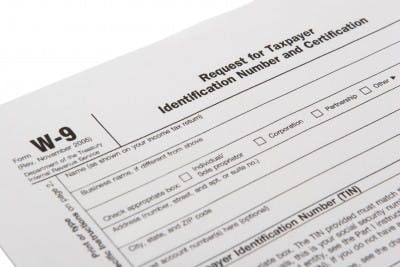By Edward N. Boehm Jr.
For at least three years now, the U.S. Department of Labor (DOL) and the Internal Revenue Service (along with a host of analogous state and local agencies) have been on the alert for instances in which workers are erroneously considered to be independent contractors rather than employees.
The popular euphemism for these situations is “misclassification” (although this term is also used to describe the different problem of incorrectly treating employees as being exempt from minimum-wage and/or overtime requirements).
What’s the big deal?
In significant part, this increased attention began with a straightforward motivation: Government revenue collections have steadily declined in the sluggish economy, so officials at all levels are keenly interested in plugging any leaks. As the DOL recently put it in a press release, “misclassification generates substantial losses to the U.S. Treasury and the Social Security and Medicare funds, as well as to state Unemployment Insurance and workers’ compensation funds.”
For its own part, the Labor Department has been hard at work ferreting-out “misclassification” under the Fair Labor Standards Act and the similar federal wage laws it enforces. In just the last few weeks, for example, it has announced:
- A $105,000 overtime assessment against a Texas employer that had considered workers to be independent contractors for their first 90 days with the company; and,
- A $101,000 demand against a Virginia employer that had considered individuals performing work on a government-funded construction contract to be independent contractors or to be subcontractors.
Numerous other DOL “misclassification” investigations, and many private FLSA lawsuits challenging independent-contractor status, are underway across the country.
As we have also highlighted, some states have joined forces with the Labor Department. And while North Carolina has not yet signed-on as far as we know, Gov. Beverly Perdue’s August 22 Executive Order creating a “Task Force on Employee Misclassification” suggests that it might soon do so. Among other things, the Task Force is responsible for:
- Identifying sectors of the economy where this occurs most frequently;
- Encouraging communication and cooperation between relevant state agencies;
- Considering regulatory changes likely to enhance legal enforcement efforts, and (perhaps most significantly);
- Identifying “ways to increase the filing of complaints by employees and other members of the public against noncompliant employers . . ..” [Emphasis added].
It’s smart to think ahead
All of this demonstrates yet again that organizations whose operating models are built even in part upon “contract labor,” “freelancers,” the oxymoronic term “contract employees,” or independent contractors by any other name simply cannot afford to ignore the current enforcement climate. The wise course is to evaluate without delay what the prospects are that such workers can be shown to be true independent contractors under each legal test that might be applied.
Perhaps the very first question should be whether the circumstances of the arrangement lend themselves to independent-contractorship at all. In some situations, it will be unlikely that this status could be successfully defended, taking into account such things as the organization’s need to control the worker’s activities and all the other operational and managerial considerations involved in meeting the organization’s objectives.
Even if the chances seem more favorable, management will want to be sure that is has done everything it can to strengthen its position.
This was originally published on Fisher & Phillips’ Wage and Hour Laws blog.
